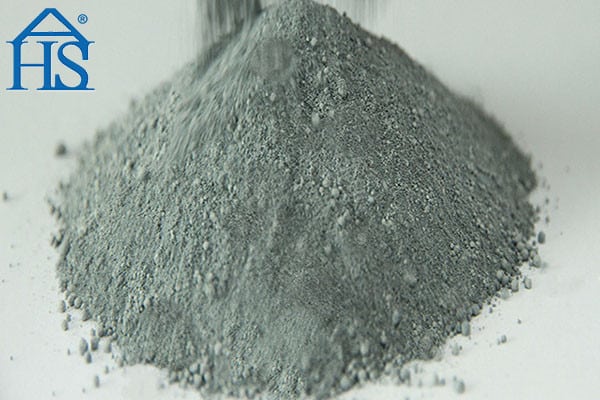Generally speaking, the silica content is a measure to test the quality of micro-silica fume. The higher the SiO2 content, the higher the performance of microsilica fume and the lower the content of other non-SiO2 impurities. Therefore, the methods of testing the SiO2 content in microsilica powder are listed.
In general, the testing and assaying of silica content in silica fume of micro silica fume is usually done by the weight method of hydrofluoric acid. Before detecting the silica content, the amount of burnt loss should be detected first, and then the silica content can be detected.
Micro silica fume burn loss detection assay
Accurately weigh the silica fume sample 0.5g, after 105 ~ 110 ℃ drying, added to the platinum crucible, and then by 950 ~ 1000 ℃ searing 45min, and then the crucible in the dry which cooled to room temperature, weighing. So repeatedly, until constant weight.
Hydrofluoric acid weight method
Accurately weigh 0.25g of the specimen after measuring the loss of burn, moisten with a small amount of water, add 4~5 drops of sulfuric acid (1+1) and 5~7mL of hydrofluoric acid, put it on the hot plate or electric stove to heat and volatilize at low temperature until nearly dry, then take it off and cool. Add 2~3 drops of sulfuric acid (1+1) and 3~4mL of hydrofluoric acid, continue to heat and evaporate until dry, then increase the temperature until the white smoke of sulfur trioxide completely escapes, put the platinum crucible in a high temperature furnace and scorch it at 900℃ for 30min. Repeat this until constant weight.
Testing of micro silica fume fluidity
The testing of the fluidity of micro silica fume is also a method to measure the silica content. This is because the fluidity of micro-silica powder is not proportional to the silica content, but there is a certain relationship, generally speaking, the higher the content, the better the fluidity. But there are exceptions, for example, the same 92% silica fume, some have good fluidity and some have no fluidity at all. So, this is the reason why fluidity testing is needed.
Undensified Silica Fume
For Undensified Silica Fume can be used a simple method, namely: 40 grams of water: 60 grams of micro silica fume: 0.2 grams of dispersant (tri-poly or P530), fully stirred, poured on a glass plate, natural flow, measurement of the flow area, if the average diameter is greater than 150mm will generally be very good mobility, but also to do the indefinite test block test, according to the final determination of the amount of water added fluidity good or bad but now the domestic Micro-silica powder can reach this standard is too little.
Densified Silica Fume
For Densified Silica Fume, the above method cannot be used, but only the indefinite specimen is used for determination.
Regarding the indefinite specimen, since we mainly test the fluidity of micro-silica fume, you can determine an arbitrary ratio, for example, if there is bauxite aggregate and fine powder, you can use the following ratio: bauxite aggregate 5-3MM 40%, 3-1MM 13%, 1-0MM 15%, 180 mesh bauxite fine powder 20%, aluminum Cement 7%, micro-silica powder 5%, tri-poly 0.15% or tri-poly 0.07% six partial 0.05% After weighing the above raw materials, add them into the rubber sand mixer to dry mix for a while, then add 6% water while mixing, and then mix for three minutes to see the consistency of the mixture. If it is thinner and has good fluidity, it proves that the quality of micro silica fume can be. If it can not flow, you can add some more water appropriately to determine how much water is needed.
But this is also judged by experience, if you need to be accurate, you need to choose a better flow of micro silica fume, to determine a standard amount of water, the mixture will be mixed in the cement sand mobility tester (jumping table method) to determine the flow value of the self-flow and jumping 15 times, this value is the standard flow value, the determination of various other micro-silica fume, look at the standard flow value of the water required to determine the fluidity of micro-silica powder good or bad.
Read More Visit: https://hsamaterial.com/blog/a-complete-guide-to-silica-fume-testing.html





